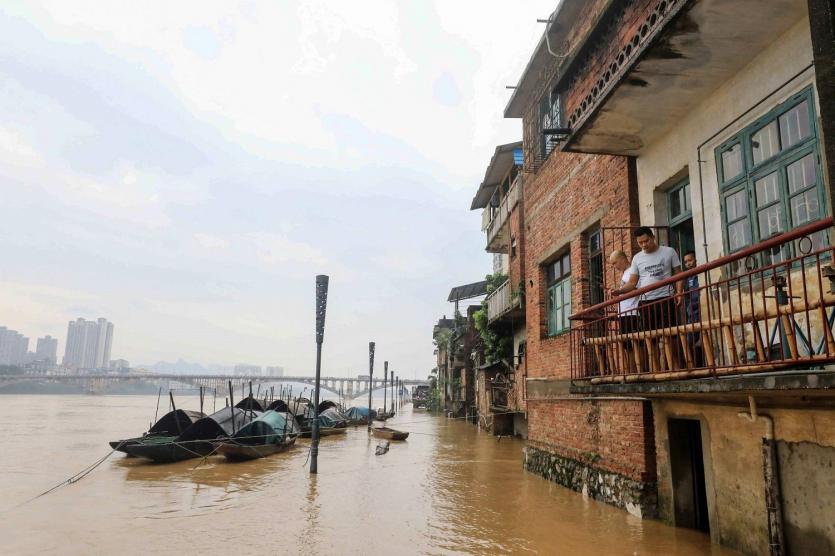People look at a flooded street along the swollen Rongjiang river after heavy rains in Rongan, in China's southern Guangxi region on July 2. Photo:AFP
By Patryk Krych | The World Daily | JULY 14th 2021
According to a recent Greenpeace study, several of the most major urban hubs in China, including its capital of Beijing, may be facing more extreme climate conditions in future – including hotter and longer summers, as well as more intense rainy seasons.
The study, conducted by Greenpeace, was focused on mapping out the predicted extreme weather conditions that would be caused due to climate change. They had issued the warning on Wednesday, giving particular concern to urbanised areas.
The extreme weather risks had been heightened in more densely-populated city centres, with hotter summers and wetter rainy months having been noted as likely effects, said Greenpeace East Asia. However, it’s also been noticed that the risks are also growing in communities that are gradually becoming urbanised, in the outskirts of China’s megacities.
“Urban areas still don’t fully understand the variety of changes, and which ones will impact which areas and how, enough to be ready for them,” said the climate and energy project leader for Greenpeace in Beijing, Liu Junyan.
This could mean, among other things, that such instances as severe flooding could become more commonplace in the country. Last year, in July, 16,000 people had to be evacuated from the town of Guzen in China’s Eastern Anhui province. With the recent warning in place, it’s become clear that threats of flooding may now also be directed at such cities as Shanghai.
“For Beijing, we know this temperature rise will look like more days with temperatures at 35 degrees [Celcius] or hotter temperatures,” said Liu. “Crucially, a 2.6-degree rise means more exposure to heatwaves. The elderly are at risk, as are people doing strenuous outdoor labour, like construction workers and delivery drivers.”
Greenpeace added that the lengthening of Summers will also be an issue that can’t be ignored, stating that they may extend between as many as 24 or 28 days in Shanghai. This is worse in the Southern Guangdong province, where the Summers are expected to lengthen by an entire 40 days at least.
The heightening temperatures had led to an electricity shortage in the Guangdong province in May of this year, inciting many local authorities to curb their overall power usage in order to try and help the crisis.






